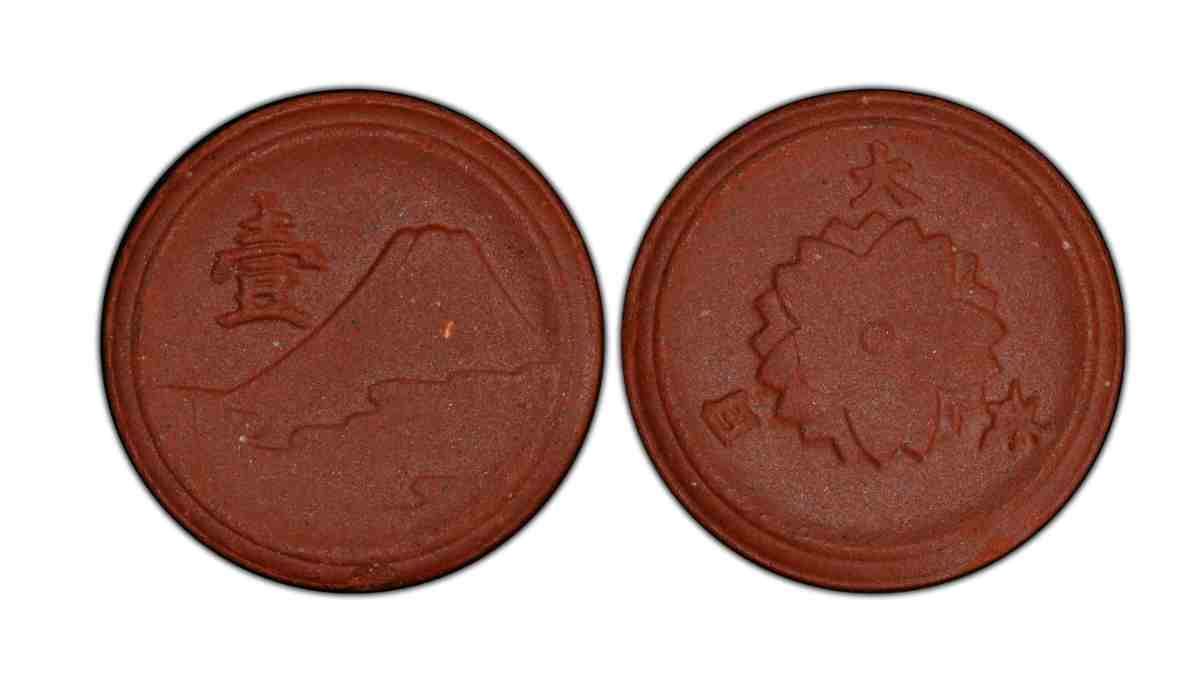When we think of currency, we often envision shiny metal coins and crisp paper bills. However, a recent discovery in Kyoto, Japan, has unveiled a fascinating alternative to traditional money: ceramic coins. This remarkable find not only sheds light on the creativity of human ingenuity during times of crisis but also highlights a unique chapter in Japan’s monetary history.
The Context of Creation: Metal Shortages During World War II
This Article Includes [hide]
Ceramic coins were produced in response to significant shortages of metal during World War II. As resources became increasingly scarce, particularly in the later years of the war, Japan faced the challenge of maintaining its monetary system. The production of ceramic tokens was a practical solution during a period of desperation and resourcefulness.
These ceramic coins were crafted in specific historical contexts, primarily when conventional materials were unavailable. The ingenuity behind creating currency from alternative materials speaks to the adaptability of societies under pressure.
A Remarkable Discovery in Kyoto
According to a recent announcement by the Japan Mint, over 500,000 ceramic coins were discovered in a warehouse near the Higashiyama Ward, a historic area in Kyoto that served as Japan’s capital for more than a millennium. The announcement was made on October 9, drawing attention to these unique artifacts of wartime Japan.
These coins were never circulated, as their release coincided with the end of the war. Consequently, they remained unissued, creating a rare cache of historical currency that had never entered the Japanese market.
The Value and Composition of Ceramic Currency
The discovered cache contained ceramic tokens, specifically worth 1 sen, which is one-hundredth of a yen. These coins, referred to by the Professional Coin Grading Service (PCGS) as “tokens in porcelain,” present a fascinating study in durability and design.
While PCGS suggests that the release of these porcelain coins was planned for July 1945, the war concluded in August of that year, leading to speculation that these tokens might have circulated for as little as one day. Some sources even contend that none of the ceramic tokens were ever officially issued, adding to their intrigue.
A Collector’s Treasure
As awareness of these ceramic coins grows, collectors around the globe are beginning to recognize their historical significance and potential value. Although they were never used in everyday transactions, their unique origin story and connection to a tumultuous period in history render them valuable artifacts.
The ceramic coins serve as a tangible reminder of the resilience and creativity that arise during challenging times. Collectors appreciate not only their rarity but also the story they tell about a society that adapted to the severe constraints of war.
Conclusion
The discovery of ceramic coins in Kyoto is more than just an archaeological find; it’s a testament to human adaptability in the face of adversity. These tokens of porcelain reflect a unique moment in history when the need for currency transcended the availability of traditional materials. As interest in these historical artifacts grows, they offer a new perspective on the evolution of money and the resourcefulness of people during challenging times.







Leave a Reply